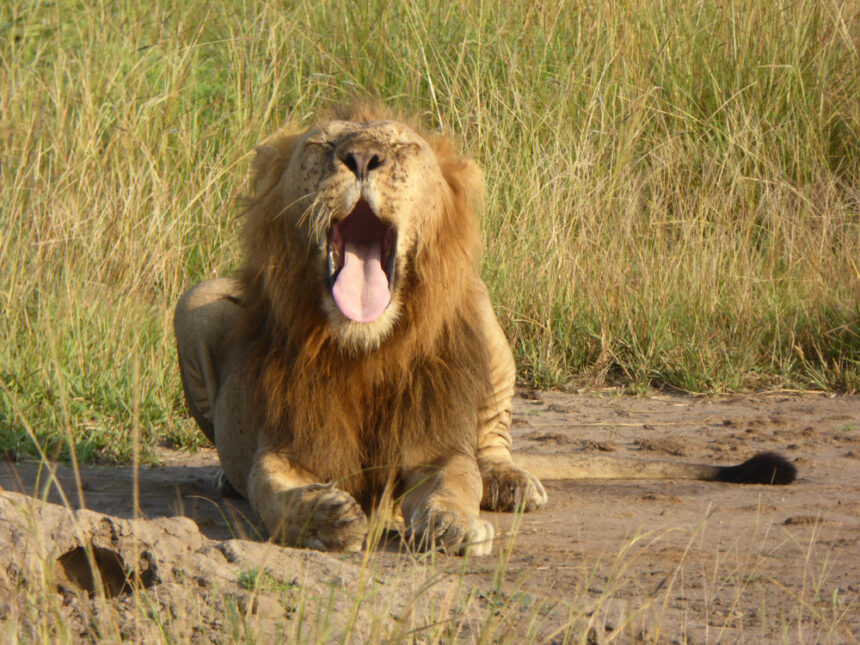Africa’s Big 5-What are they and why
If you are in search of a destination that offers the best setting for wildlife viewing experiences, without doubt, Africa will come among the top if not Number one. And if you have well surfed the internet for safaris to Africa, there are high chances that you have come across titles like “Africa Big 5 safari” and this kind of safari would intend to let you encounter these animals that are the most sought after in Africa’s Megafauna.
Some of these animals are major drawcards for most tourists to African countries like Uganda, Rwanda, Kenya, Botswana,Tanzania and South Africa among others. These are Elephants, African Buffalo, Rhinoceroses, Lions and Leopards.
These were once the most targeted animals for hunters. In the 1800s to the 1900s, Kings and colonialists would go hunting and to kill an in animal in the big 5 would grant you popularity, prestige among others because they considered the most dangerous and challenging animals to hunt while on foot or using local tools.
Many of the hunter could lose their lives trying to bring trophies of these animals back home but also many of these animals were lost. Some of them are listed “Vulnerable” or “endangered” by the International Union for the Conservation of Nature (IUCN) and despite the Strict law put up by African governments, some still poach or hunt these animals! But thanks to tourism as their numbers are improving in some African countries like in Uganda and Rwanda. For example the Uganda Wildlife Authority has seen a rise in the reintroduced White rhinos in Ziwa Rhino Sanctuary and according to the Rwanda Development Board (RDB), Elephant population and the recently reintroduced Lions and Rhinos to Rwanda’s Akagera National park are doing well.
Each of these animals have unique characteristics and behaviors. Explore them below:
African Elephant (Loxodonta Africana)
Elephants are the largest land mammals and can weigh up to 7 tones! The African Giants are largely threatened by the illegal ivory trade. Only 37 of 56 African countries house these mega mammals. Their populations is 400,000s and unfortunately 8% of them is lost every year and IUCN has listed them as “vulnerable”. Elephants live in groups known as families and they are hard to hunt down by most predators thus currently, man is their largest threat other than even climate change.
African buffalo (Syncerus caffer)
These are considered most dangerous/aggressive of all the animals in the African wild spaces! Mostly the solitary/ bachelors are more dangerous than a group and they can fiercely defend themselves. The cow like animals are usually in large herds and a large group is defense against predators.
These are plenty in most of African savanna parks like Kidepo valley national park in Uganda, Masai mara Wildlife reserve in Kenya, Serengeti National Park in Tanzania and Akagera in Rwanda. Both males and females have horns which they use for defense against predators.
Lion (Panthera leo)
Lions live in prides of up to 30 individuals and pride members take care of each other. Nicknamed “King of the jungle” lions are aggressive hunters and second largest big cats in the world. Though they are called kings of the jungle, lions always dwell in the open grasslands of the savanna parks not usually in forests. Males are always dominant over others and they eat first after a kill however there is no social hierarchy in prides, the strongest can take over.
Lions’ numbers are gradually reducing and they are listed “vulnerable” by IUCN too!
Leopard (Panthera pardus)
Leopards are elusive and some of the most solitary animals in the big 5. They prefer bushes, rocky areas and are good climbers, usually are caught resting in trees. They are very adaptive and can easily be seen in different environments. Most times they hunt at night and they have agility to lift prey twice their body size into trees to avoid scavengers.
Leopards are “vulnerable” on the IUCN list too.
Rhinoceros (Rhinocerotidae)
Rhinos are divided into two species of Black and White Rhinos and 5 sub species of Southern white Rhinos, Northern White Rhinos, Southwestern Black Rhino, Southern central black rhinos and southern white rhinos.
Due to poaching some subspecies like the Western black rhinos, got extinct in 2011 and only 2 females of the Northern white rhinos remain making them functionally extinct. About 29500 rhinos remain on earth. Some African countries have tried to reintroduce rhinos. Uganda started a project under Rhino fund and it now has over 30 southern white rhinos which can be tracked on foot and Rwanda recently reintroduced rhinos to Akagera National park.
So if you are visiting Uganda or Rwanda there are chances that you will encounter all of the Africa’s Big 5.


